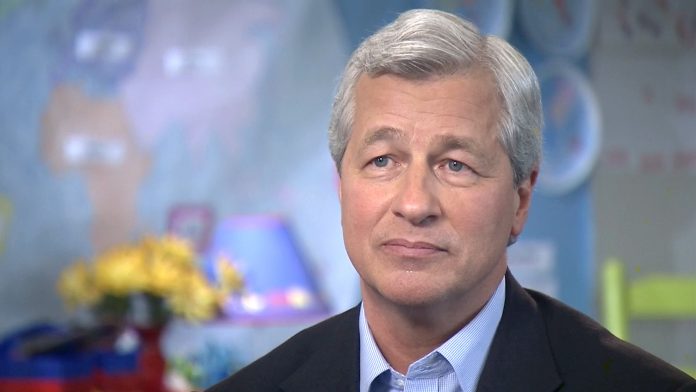Billionaires the world over are worried that another economic bubble is forming; in the housing market, stock market, or somewhere else entirely. Of course, none of them are ready to “cash-out” of equities quite yet. As long as the market keeps rising, they’ll stay long on stocks.
But that doesn’t mean the rich aren’t getting nervous. CEOs have grown increasingly wary, too. In early January, America’s corporate leaders predicted a slowdown in the second half of 2020.
Now, some of them believe a debt bubble could cause a productivity crunch.
J.P. Morgan Chase CEO Jamie Dimon, whom many analysts view as a top representative of American finance, said as much during an interview this morning at the World Economic Forum in Davos, Switzerland.
When asked about areas of economic weakness, Dimon remarked that “sovereign debt” is approaching alarming levels. Last week, the Congressional Budget Office released a report projecting a U.S. federal deficit of $1 trillion by the end of the year.
In Q4 2019, the government ran a deficit of $357 billion. Total U.S. public debt outstanding sits just above $23 trillion, $17 trillion of which is owned by the public.
Dimon’s particularly concerned that investors have overpriced government debt, to the point at which central banks are now “locked” into unavoidably low rates.
“Right now, people think central banks around the world can do whatever they want. They can’t,” he said.
“They’re intelligent, looking at all the facts trying to figure out what to do. But [inflation] would be the big negative surprise.”
Typically, central banks raise rates to combat rising inflation. But these days, that’s simply out of the question. Rate hikes would make government borrowing significantly more expensive while simultaneously crushing bond prices. Investors holding negative-yielding bonds would incur massive losses.
“I think it’s very hard for central banks to forever make up for bad policy elsewhere. And that puts them in a trap,” Dimon said.
“Do you know anyone who’s actually bought a negative interest rate bond?”
As of December last year, negative-yielding debt totaled $11 trillion worldwide. Almost half of all European government bonds had negative yields.
“I would never buy a negative rate bond. Not unless I was forced,” Dimon added.
“In history, whenever you see something like that, it doesn’t necessarily end well.”
Dimon’s sentiment echoes that of former International Monetary Fund leader (and current European Central Bank chief) Christine Lagarde. Back in April of 2019, Lagarde warned that the high debt/low-interest mix could create problems down the road.
“The reality is that many economies are not resilient enough,” she said. “High public debt and low-interest rates have left limited room to act when the next downturn comes, which inevitably it will.”
The “downturn” has yet to arrive, but that doesn’t change the fact that Lagarde’s observation was on point. Here at Unseen Opportunity, we even recognized that a debt bubble could be forming back in 2018 when negative-yielding bonds became popular with European governments.
That bubble has yet to “pop,” but if it ever does, both bondholders and issuers stand to get burned. Until that happens, though, there’s little sense in leaving the market.
Especially while the historic bull run continues into its 11th year – something that still astounds analysts to this day.







